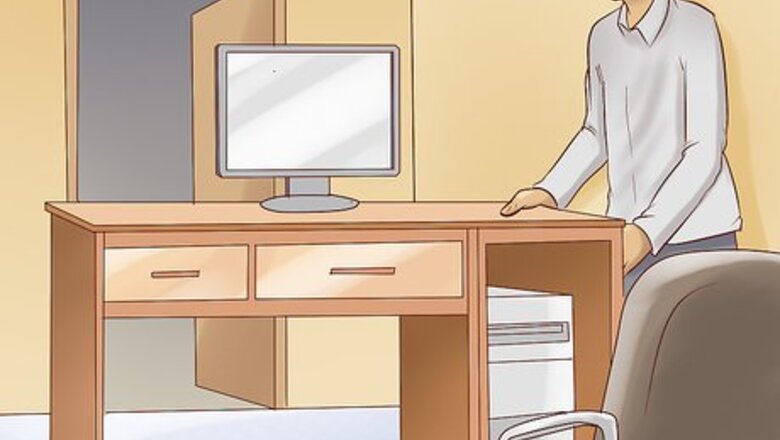
views
How to Stay at Your Workstation
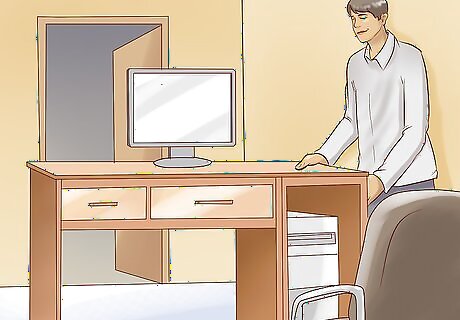
Arrange your desk so no one can see your computer screen. If you work in an office or cubicle of some kind, you don’t want someone to walk up behind you without you knowing it. Arrange your computer so you are facing the entrance to your area. If you have non-work windows open, you can quickly close them without them being seen. In many cubicle-style settings, your desk will be set up in a fixed position. At the very least, turn your screen away from the entrance and angle your chair toward the entrance.
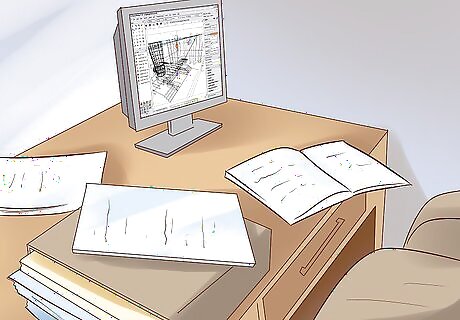
Scatter work materials around your desk. Peel off four or five sticky notes and write messages on them. Even peel off a few and leave them blank at different spots on your desk in case you need one in a hurry. Set out binders and open them to project pages. Leave a few documents that look like what you should be doing. Don't bring things from home that don't look like work. Use old projects or make some decoy documents that look like what you'd be working on. There may be a fine line between a messy, work in progress desk and a desk that is just a mess. Keep things in check so it doesn't get too out of hand.
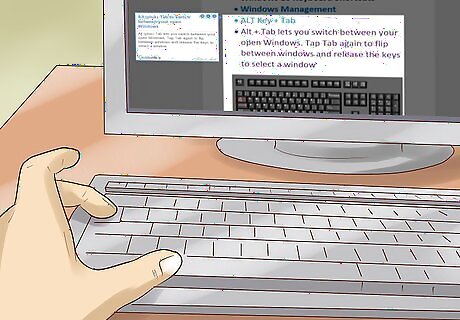
Learn to quickly switch between tabs and windows. Keyboard shortcuts allow you to toggle between windows and tabs. Use this trick to switch from watching internet videos to checking over the latest customer data. Practice the shortcut so you can tap it quickly without thinking. Use Alt+Tab on PCs to switch from one window to another window. On Macs, use command+tab to switch between open applications. Use Ctrl+Tab on PCs to switch between tabs within the same window. On Macs, use control+tab to switch between tabs in the same window. For example, if you have a Mac laptop, open iTunes, two different tabs on Safari, and Garageband. Hold command and press tab to switch from iTunes to Safari. Then hold control and press tab to switch from one Safari tab to the other Safari tab.
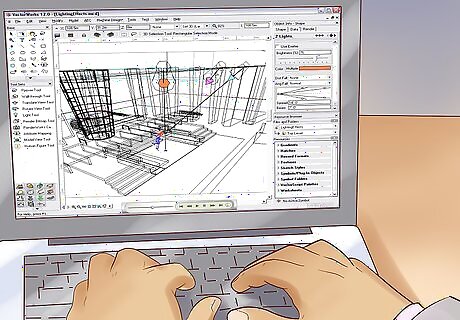
Open decoy tabs that look like your work. If you are an accountant, always have a couple of spreadsheets open. If you do graphic design, have a couple sketches that you're "working" on. Open these tabs first thing in the morning, or set them to open automatically when you open a browser. Never close all of your tabs so just your desktop is showing. An essentially blank screen will be a dead giveaway that you are not doing anything. Email, Word, Google docs, business websites, news sites, are all good to keep open, depending on what type of work you do.
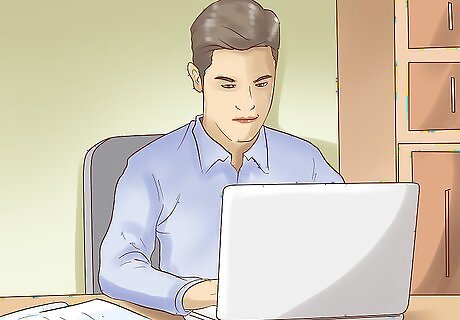
Scribble or type furiously. The key to looking like you are busy is to always be doing something. If you appear to be sitting completely still, it’s going to be obvious you aren’t working. Anytime you get bored or have a lull in your work, grab a notebook and start writing something or peck quickly on your keyboard. It doesn’t matter what you are typing or writing, if you seem to be paying close attention to it, you’ll look busy. This works better if you have a document on hand that is work-related. If you are asked, show the decoy document as proof of what you’re doing.
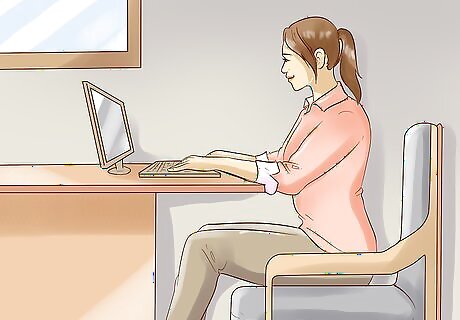
Sit up straight and look at your work. Slacking off without being noticed has a lot to do with how you look. If you are slouching in your chair, leaning against something, or staring off into space, you’ll look lazy. Good posture and keeping your eyes on something that looks like work will do a lot for your image. If you stand while you work, don’t be caught sitting down or leaning up against something. If you’re going to zone out, make sure you have some work out in front of you and keep your head pointed toward the work stuff.
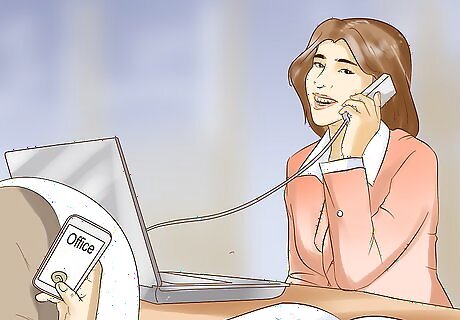
Use your cell phone to call your desk phone. Being on the phone, if it’s part of your job, is a great way to look busy. If the phone is slow sometimes, dial your desk phone from your cell and then answer the desk phone. Depending on how good you are at acting, it’s easy to kill 10-15 minutes a few times a day on fake phone calls. You’ll probably want to have a plan for what the fake phone call is supposed to be about. If you seem to be rambling or not making sense, it will be obvious you are faking it. If you want to really put some effort into it, write up a script for a standard conversation you’d have at work. Write dialogue for two people, but make sure you only read the part that makes sense for you to say.
How to Leave Your Desk
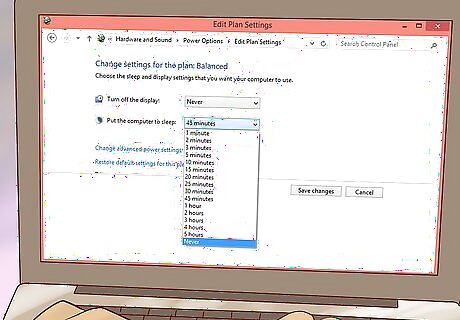
Disable the sleep mode on your computer screen. To save power, many computers go into sleep mode after a certain time of inactivity. If you leave the desk for long enough that your screen saver comes on, it’s a giveaway that you’ve been gone awhile. Turn the sleep mode off so that the screen always looks like you just left. Make sure to leave a few windows open so it appears that you were working on something right before you left your desk. Never leave anything like a shopping site or a game open on your computer when you leave. Another option if you work on the computer is to leave something open that says “Loading” or “Installing,” because this gives you a good reason to leave your desk.
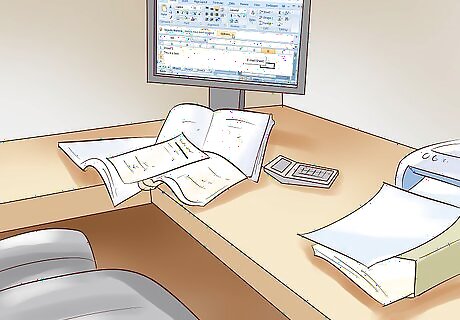
Leave your work area looking like you’re in the middle of something. Fill your work area with several projects that you are in the process of doing. Cover your desk with open binders, highlighted reports, tools, or partially unpacked merchandise. If it appears that you are working on something, people who walk by will assume you’ll be right back. Don’t leave the same fake setup every day or people will start to notice. If you sort through a box of items, leave piles halfway sorted.
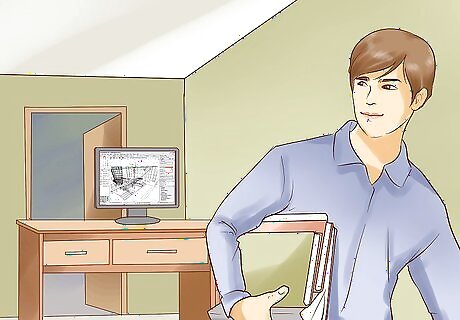
Carry a prop. If you walk away from your desk empty-handed, it’s going to look more like you’re not doing anything. Carry a binder, a notebook, or a small stack of papers so it looks like you’re on your way to meet someone. In other settings, carry a tool, a box of merchandise, or a piece of equipment. The best thing to carry will be determined by what your job is. Don’t carry the same prop every day or it will begin to be obvious that it’s a prop. Choose something that is easy to carry and can be set down and picked up without too much effort. A small item will make you look busy while not drawing too much attention.
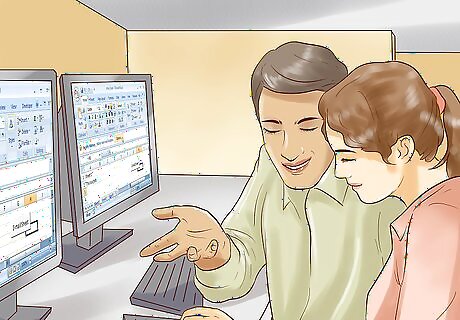
Visit a coworker in a different department. Think of a work-related topic, like a recent policy change or a big project your firm is working on, and go discuss it with someone. When you go chat with the person, mention the work related thing, but talk about other things to use up more time. If you make up a fake topic, make sure it seems real enough to be a good cover. Mention what you are doing to someone who works next to you to establish the alibi. Say, "I wanted to double check and make sure both of our departments were on the same page about the new ad campaign. I know it's an important issue and I’d hate to have any mix-ups."
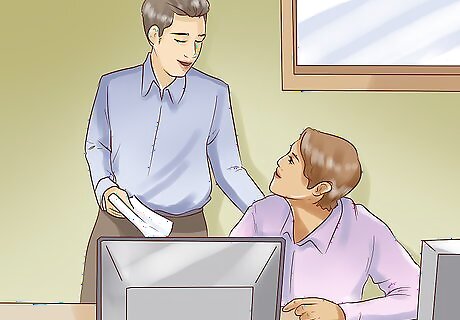
Ask a lot of questions. Asking questions about projects, tasks, company policies, job duties, promotion opportunities, or anything else related to your job, is a great way to seem highly engaged while not actually working. This is especially useful during transition periods because it makes sense to ask a lot of questions. Be careful what questions you ask because you don’t want to sound incompetent at the job you’re required to do. For example, ask a boss if they have copies of designs that your current client has previously requested. When she shows them to you, find things about them to discuss further.




















Comments
0 comment